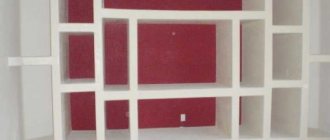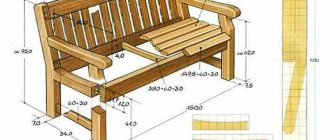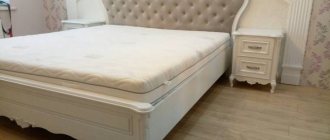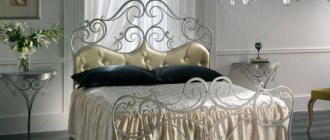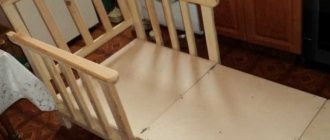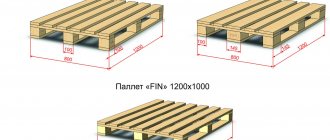Many people dream of having a pet and choose cats - they are very beautiful, graceful, and fluffy. One thing that frightens us is the habit of cats scratching their claws on wallpaper and furniture, scratching walls and doors.
This behavior is characteristic and natural for all cats. Natural necessity forces them to remove the so-called claw covers (dead top layer) so that the claws remain sharp.
Reasons why cats tear and scratch wallpaper and furniture:
- muscle strengthening;
- a way to express your emotions and boredom;
- mark your territory, because the smell is left by liquid from the sweat glands located on the paw pads;
- expression of love for the owner through his favorite furniture;
- a way to remove the top dead layer of nails.
Ways to wean a cat
There are several ways to wean a cat or kitten from tearing up furniture and wallpaper:
- training to use a scratching post;
- spraying surfaces with a special spray;
- treating walls, wallpaper and furniture with products that have an odor unpleasant to the cat;
- attaching an adhesive surface to the turning areas;
- protection of the cat’s sharp claws with special caps;
- an ordinary spray bottle with water.
And, of course, you need to pay more attention to your pet. Play with your cat more, occupy her free time with toys. Then he will not have the desire to scratch furniture or wallpaper.
Anti-scratch spray
This spray can be purchased at a pet store. It contains a substance that neutralizes the odor of cat paw pads, which they emit when scratching furniture and wallpaper. In addition, it contains repellents. Cats don't like the smell and won't go near sprayed furniture or wallpaper.
Treatment with substances with an unpleasant odor
You can treat with essential oils with the scent of citrus, lavender, and mint. Cats don't like it. They will no longer scratch or tear wallpaper and furniture in this place.
Attention! Oils may leave stains on the surface. Therefore, it is better to use them in places that are invisible to the eye, so that the surfaces do not look sloppy.
Use of adhesive surface
Cats don't like their paws getting stuck in something sticky. You can take advantage of this feature and attach double-sided tape to your favorite places on wallpaper or furniture. Once the paw hits the surface of the tape, the cat will be very unhappy and will not return to that place to scratch again.
Silicone nail caps
Overhead caps will be an excellent solution that protects not only furniture and wallpaper, but also your skin from the sharp claws of your pet. They will not harm the animal, as they are made to the size of the claw from soft plastic and are attached to the surface of the claw with medical glue. There are several sizes:
- for kittens;
- for adult cats and cats;
- for large animals.
Although there are caps for kittens, they don’t need them until they are six months old. Their claws are too soft and wear down during the animal’s normal play. Older cats don't need them either - they already lose interest in the claw point. This pleasure is not cheap, but it is still cheaper than repairing and changing furniture.
Training to a scratching post
The most time-consuming, but the most convenient, so that cats do not scratch furniture, wallpaper, doors and floors. Some animals immediately start using the scratching post. But many people don't want to use it. It is not worth forcing and showing how to sharpen claws on a special device.
It is best to start training the animal when it is still a kitten, when it responds well to a strict tone. You need to speak calmly and not shout. And it’s better to interrupt the point of claws on furniture or wallpaper at the very beginning, then the kitten will understand which process the owner treats poorly. If you scold him after the wall has already been scratched, he simply won’t understand anything.
You can buy a scratching post or make it yourself.
Comment! The scratching post should be made of natural wood, wrapped with a strong enough rope and well secured.
Several devices should be placed in especially favorite places, where the cat or cat has scratched the wallpaper or furniture the most. At least one should be placed next to the place where the animal sleeps, so that when it wakes up, it has something to cling to for stretching.
You may have to wait a week or two for the animal to become interested in the scratching post. It is difficult for him to change the habits laid down by nature. Be patient. When the claws begin to sharpen in the right place, pretend that this is normal - do not pay attention and do not praise.
To make the process go faster, you can apply liquids with an attractive smell to cats (for example, valerian) to the scratching post.
Cats react to the smell of catnip and valerian because they contain substances similar to the smell of sex hormones in cats. Therefore, it makes no sense to use them for kittens. Cats love this smell more than cats - this can also be used.
Spray
Cats are afraid of sharp sounds, smells, and actions. To scare away the animal so that it does not tear the wallpaper or tear the upholstery of the furniture, you can spray it with water from a spray bottle.
What not to do when trying to stop a cat from tearing up furniture
It is possible to achieve successful results when raising cats if you act correctly. These actions will not lead to success and may worsen the situation:
Physical punishment and screaming
Leads to the cat’s loss of confidence and the development of neurosis. In this case, the animal will spoil things in the absence of the owners in order to avoid punishment.
Throwing objects at a cat
Leads to the above consequences and increases the risk of injury to the animal.
Use of aggressive chemistry
There is a risk of allergies and poisoning for both people and animals. In addition, you can ruin the upholstery.
Uses of catnip
Mint attracts cats and has an intoxicating effect. Instead of using the scratching post for its intended purpose, the animal will rub against it and roll on the floor.
If the veterinarian suggests declawing surgery, you should refuse. Together with the claw, the first phalanx of the finger is removed and the cat remains disabled for life.
Any method of aggression provokes the animal into even greater aggression.
What wallpaper is best to use in an apartment with cats?
There are no special scratch-resistant wallpapers, but some types can be recommended for renovating a room where cats live:
- Liquid wallpaper is very smooth and has no texture - there is nothing for claws to catch on.
- Hot stamped wallpaper can also be used, only all joints and corners must be glued with a special tape so that the surface is very smooth.
- Vinyl and fiberglass wallpapers are durable and resistant. In addition, they are easy to wipe with a damp sponge if the cat rests its paws on the wall or shakes off moisture after a walk. And they can also be repainted.
- Decorative plaster will be an excellent way out of the situation. We must give preference not to the most beautiful, but to the most durable plaster.
- Panels made of plastic and chipboard are scratch-resistant and easy to care for. You can also simply replace the damaged panel rather than repair the entire wall.
- Porcelain tiles will not attract any attention from the cat - they are completely resistant to such damage. It is enough to line the wall with it from below, to a height accessible to the cat.
Attention! You can protect your wallpaper without resorting to major repairs by decorating it with carpet. If a cat has torn up the walls, for example, in a corridor, the material is fixed to a height that it can reach. Carpet is fairly easy to replace when it becomes unusable.
Why do cats scratch furniture?
Domestic cats scratch the back of the sofa or the upholstery, as well as all soft and suitable materials (wallpaper on the walls or the carpet in the living room), following their instinct, which has exactly two functions:
- sharpening claws and removing calluses, which, of course, is very important and is part of the animal’s healthy behavior;
- a kind of mark of its habitat so that other animals understand that there is already an owner here.
So cats tend to leave their mark on furniture or walls. However, this doesn't mean there's nothing you can do.
Choosing a floor covering
However, a cat can damage not only furniture and wallpaper, but also the floors in the room where it lives. Jumping, active movement and braking will cause serious damage to the floor covering.
That is why it is worth paying attention to ensuring that the floor is moisture-resistant and durable:
- Linoleum is the most convenient material that does not require large expenses for purchase and repair. Caring for it is very simple, it is not at all afraid of moisture. Pay attention to the strength of linoleum - it is better to take semi-commercial, it is stronger than household.
- It is better to combine carpet or rugs with a non-slip base with linoleum in the covering so that the cat's paws do not slip on the floor.
- PVC tiles - similar to linoleum, but easier to repair (you can replace one or more planks that were damaged by an animal).
- Laminate is the most popular solution. Among other things, it has the ability to repel cat hair - it will not stick to the floor. When choosing, pay attention to the resistance of the coating to moisture and wear.
- The best solution is porcelain tiles. However, it has a big drawback - it is very cold and uncomfortable for use in a residential area. This can be corrected by installing a heated floor system.
Which door should I install?
Very often, cats who are used to walking outside peel off the wallpaper to show that it is time for them to leave the house. The owners of such animals have to face the need to constantly go to the door to let them out or let them in. Even at night you have to get out of bed for the sake of your beloved cat.
You can save yourself from this need using a special door.
You can make such a device yourself, or you can buy it. There are many different models of cat doors; they usually consist of a tunnel and two entrance doors.
The most common of them:
- door;
- window;
- manhole
The hole is not protected by anything, and it is best to do it in room doors for moving inside the house.
The window is equipped with a sash that moves on a hinge. This design can already be used to leave the house.
The most convenient option is a cat door. The doors are secured on both sides of the hole cut in the entrance door leaf. They are made of moisture-resistant materials and are mounted on a special rim of the frame.
If you decide to make a cat door yourself, then you need to remember that it should be light, for example, made of plastic, and open in two directions - in and out. For this you will need special hinges. The perimeter of the frame needs to be upholstered with some material, for example, carpet. Such a door will not only be beautiful, but will also save the house from drafts.
Now you can buy electronic cat doors. They are equipped with a reader, and the key to it is located in the collar. This will save the house from other people's animals.
Video on how to stop a cat from tearing up wallpaper and furniture:
Recommended Posts
How to remove marks from a felt-tip pen, marker, pencil, plasticine...
Wood antiseptic: which one is better to choose
How to groove walls and ceilings for wiring
Sliding wardrobe: internal contents + photo
How to correctly write an application for roof repair
How to fight fungus
Comments
- Great article! I will definitely use your advice. I want to share with you an interesting article on the topic https://stylish-shop.com/domik-dlya-koshki-svoimi-rukami/
Yulia22.10.2020 at 14:21
Answer




